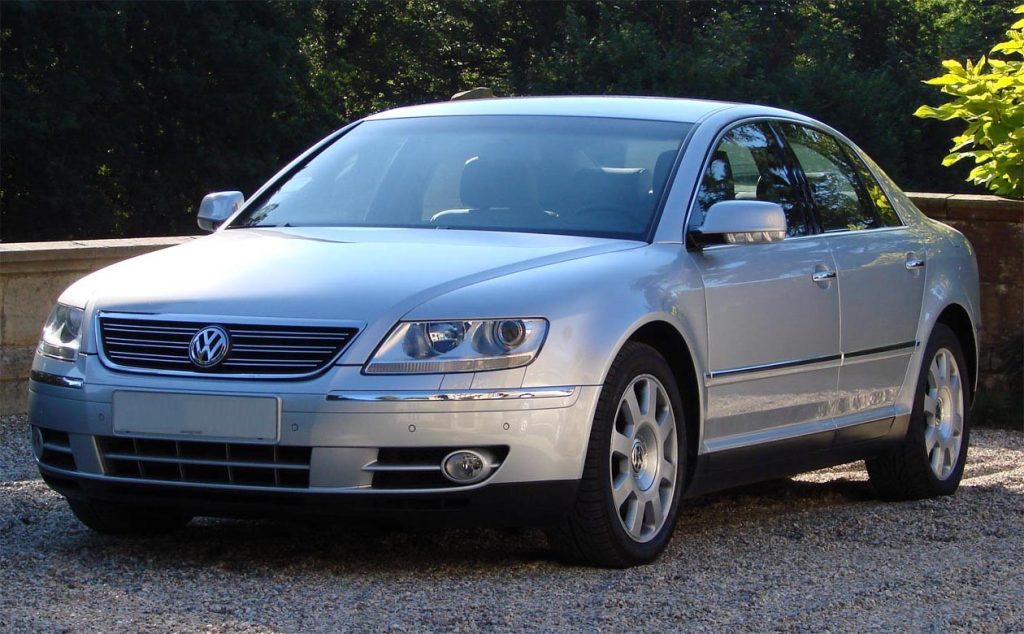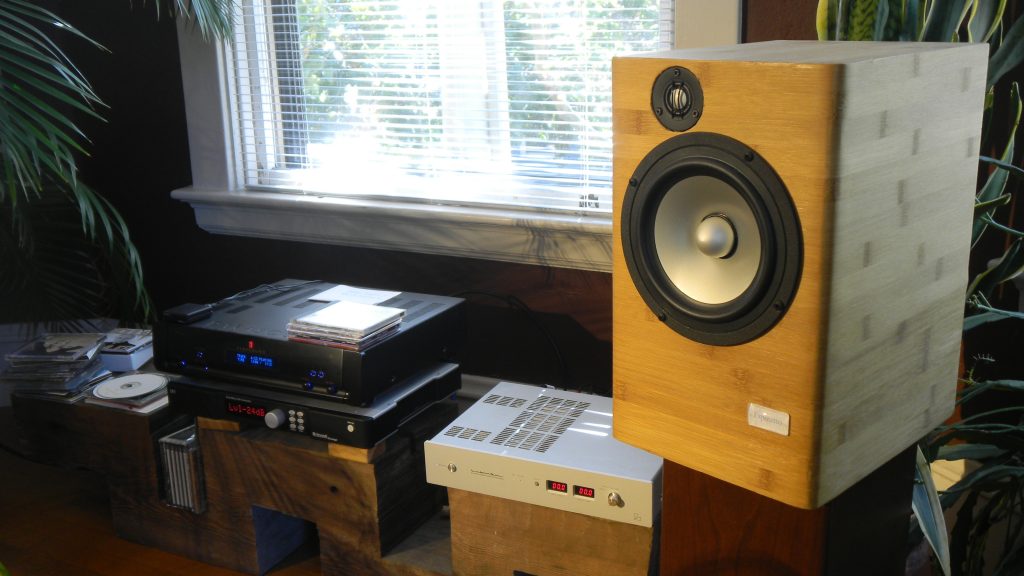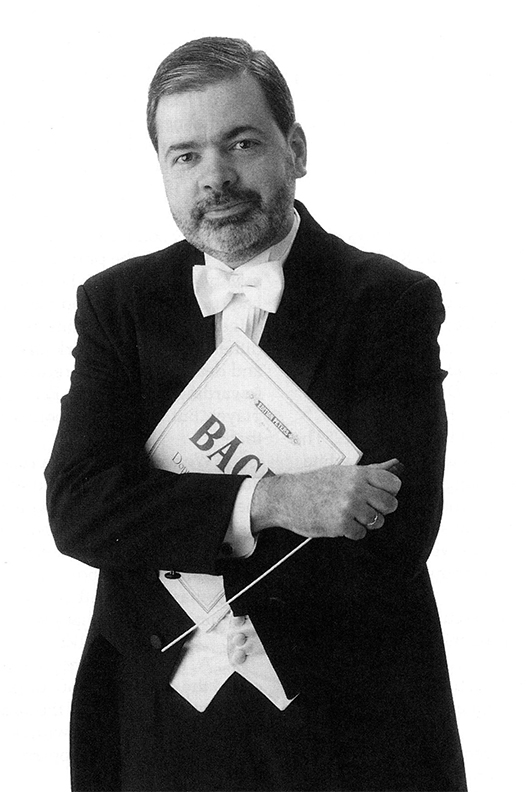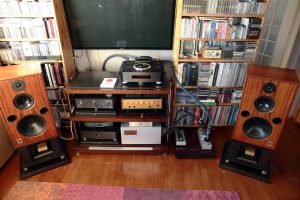I must confess that I love Alternate History books, the more plausible the better. But I will fall for the occasional "Time Machine from the Future" yarn.
In addition to writing about audio, I also was an automotive journalist. I was accredited to Mercedes-Benz USA by the U.S. Mercedes Club. I also wrote for Robert Farago's famous website The Truth About Cars, as well as for Hagerty Media.
Furthermore, one of my favorite Non-Fiction genres long has been "Business-Failure Narratives." The guy from Yale who wrote the corporate-governance postmortem on Ford's Edsel car guest-taught at Vanderbilt Law School. I did not take his course, but I did read his book: Selling the People's Cadillac: The Edsel and Corporate Responsibility.
So, let me now try to draw James-Burkean Connections between Audio Research, VW's Phæton, and Subaru vs. SAAB. The common threads being Corporate Hubris, Corporate Groupthink, and mistaking one's own desires for those of the general public. This is not to say that Audio Research is as doomed as was the Phæton, or as was SAAB. I surely hope not!
Also, I am not saying that there aren't times when it might be for the best to ignore the public, and just build that better mousetrap. Henry Ford was very much against market research. Ford famously said words to the effect that, had he asked his future customers what they wanted, they would have told him they wanted a younger, faster horse – and, one that ate less. At that time, almost nobody could imagine that Ford would be able to build a car that average people could afford.
All that said, I don't think that Audio Research's "See-Through Meters" is that kind of very rare case.
When I read the news about Audio Research having made an Assignment for the Benefit of Creditors, I did a little snooping around the internet, and I was totally gobsmacked by this image:
"We have no need of…See-Through Meters, Señor."
Those, I learned, are dual GhostMeters™. The front panel contains a see-through pane of glass that lets you see the vacuum tubes, while pixels embedded within the glass provide the illusion of rocking meter needles. ("Tommy, can you hear me?")
I admit that Audio Research was pretty much not on my radar screen (it's not a great value-for-money proposition, IMHO). Therefore, I was surprised to learn that the Ghost Meters date back to 2019. Their designer explained them thusly:
"We had always desired a big meter on the front of the unit: meters are cool simply because they're making the music visible, creating a sort of magic link between the ears and the eyes."
"Magic link." Oh my.
But note… it was a matter of "We" who it was, who "had always desired." The designer did not claim, "For years, our customers have been asking for big meters."
I can only wonder how many precious Non-Recurring Engineering (NRE) Expense dollars went into that little feature. A feature that a certain number of customers will rarely or never use, because their amplifiers are not within the line-of-sight from their listening chairs.
So, first, there's that NRE cost. Then, there's the per-unit cost, which must bear some responsibility for the high retail price of the amplifier ($20,000, as of 2020).
In round numbers, over the past 50 years, Consumer Prices have gone up 400%, while ARC's prices have gone up 800%. (BTW, VTV makes amplifiers based on Purifi's amp module; they sound exceptional, at circa 10% of $20,000.) Needless to say, my initial reaction to the Ghost Meters was… negative.
My first thought was that this was a case of Corporate Big-Meter Envy…with the envied party being ARC's former corporate stablemate McIntosh Laboratory. My second thought was to doubt that ARC had focus-grouped the benefits versus the costs. I also doubted they had let their dealers take part in the decision-making. (But perhaps I am all wet.)
My favorite story about strategically keeping your dealers in the dark involved a different maker of boutique power amps. Their first entry into the six-channel Home Theater amplifier product category was a hush-hush project. Especially because, the chassis design was by a supposedly famous industrial designer. Who charged a boatload of money, and whose design was shockingly expensive to execute.
So, that Home Theater amp gets released, and… it was a flop. The prime reason it was a flop was that the Corporate folks were all so busy ooh-ing and aah-ing over the Industrial Design that nobody noticed that the new HT amp's chassis was too wide to fit into the standard electronic-equipment rack.
We're talking about Home Theater here, folks. Most Home Theater installations sequester most of the tech in a closet, or at least in a standard equipment rack in a cabinet with a door or doors.
When confronted with this, the designer reportedly explained that not fitting into a rack was a non-issue, because his Industrial Design was so beautiful and unique that the proud owners will want the amp to be out on the floor and visible. Righty-O. This is Home Theater, right? People usually darken the room to watch movies.
After remembering that little goof (which put that particular audio company into a tailspin, which led to desperation, which led to more bad judgment calls), I immediately thought of Volkswagen's ill-fated Phæton car project.
VW's 2005 Phæton
From 1949 to 1974, VW sold its Original Beetle compact car in the US. The Beetle was a known quantity, and it was cheap. Very cheap. A brilliant print-magazine advertising campaign jiu-jitsu'ed what might have been bugs (ha ha ha) into features.
Volkswagen then switched to liquid-cooled, front-engine cars such as the Golf and the GTI, pretty much holding onto its market share in an increasingly competitive marketplace. By 1973, VW had released a mid-sized sedan, the Passat, which was an Audi 80 sedan with a fastback and a VW badge. Over time, the Passat grew longer and larger as it went more upmarket and got more expensive. But the Passat was still at best a "midsize family car," and not a "large luxury sedan."
In the early 2000s, that really must have bugged some big-wigs at VW. VW then conceived the audacious plan of competing head-to-head with Mercedes and BMW in the Large Luxury Sedan market.
Think about that for a moment. Wasn't the VW-owned nameplate Audi already competing with Mercedes and BMW? Didn't Porsche already compete with BMW? Furthermore, by that time, VW also owned the Bentley "Large Luxury Sedan" nameplate (as well as Lamborghini and Bugatti).
So, let me get this straight. Somehow, The Deciders at VW convinced themselves (and convinced each other) that selling a V-8 Large Luxury Sedan with a base price of $65,600, and a twin-turbo AWD W12 Large Luxury Sedan with a base price of $95,600, in Volkswagen dealerships, made more sense than anything else they possibly could have done. Which, by the way, at least theoretically included imitating Toyota and Nissan by introducing a completely new brand to sell luxury cars; those others of course being Lexus and Infiniti.
Couldn't anyone at VW anticipate that, if the Phæton did become a success, it might have earned that success at least in part by being an "as good in every respect… except for name recognition and cachet" lower-priced alternative; a car that rich people would buy instead of a Bentley? (They shared an engine.) In the event, however, the Phæton was not a success.
Let me make a small confession: Circa 2005, I was a Factory-Certified Volkswagen New-Car Sales Person. The store where I worked had VW Phætons in inventory. They actually managed to sell a couple or a few (heavily discounted). I gave all of one Phæton test drive. (It amazed me, the number of people who went car shopping while tipsy. Perhaps they dreaded the experience.)
But, in the big picture, the VW Phæton was a corporate bloodbath, especially in the US. In the United States market, 1433 Phætons were sold in 2004, and 820 were sold in 2005, leading VW to announce that Phæton sales in the North American market would end after the 2006 model year. (The Phæton's new dedicated factory's production capacity was 20,000 cars a year.)
The following years were not kind to the Phæton. In 2013, The Economist mentioned the Phæton in a report on Europe's biggest loss-making cars. In 2014, Top Gear Magazine placed the Phæton on a list of "The worst cars you can buy right now."
So, how did this debacle happen?
What I was told, back in the day, was that the big shots on the VW Mothership Board of Directors chafed at driving around in, or being driven around in, VW Passats; or even the largest, nicest Audis. What the VW Board of Directors guys wanted to drive (or be driven around in), was a VW Large Luxury Sedan that was, in every way possible, even better than a Mercedes-Benz.
On paper, it looked potentially feasible; the Phæton project was awarded more than 100 design or utility patents. The Phæton embodied many "firsts" for VW: air suspension with continuous damping; adaptive radar cruise control; Torsen-based all-wheel drive; and draftless four-zone climate control. The interior woodwork was a marvel to behold.
But the Phæton was an epic failure. In 2005, the image (or the badge) did not correspond to (or, live up to) the substance. "You paid $112,000 for a Volkswagen?!"
My Sales Manager told me that the "ideal" Phæton customer would be someone like a well-off general contractor who might get looked at askance by his employees and subcontractors if he drove up to a jobsite in a Mercedes; but hardly anyone would notice a VW, however large and luxurious.
The Phæton was doomed because the only people who really felt the need to own a Phæton were VW corporate directors in Germany. Everybody else had to be sold on it, and it was a very tough sale. People would laugh in your face.
There was no heading off the doom, because who wants to risk his job by telling a Big Shot, "This makes no sense; it will cause grief for our sister brands; and it will end in tears"? Given that kind of a toxic work environment (Viz., "Dieselgate"), Corporate Hubris and Corporate Groupthink will always rule the day.
For the sake of completeness, I will acknowledge that there exists an alternate explanation of how the Phæton debacle happened. That story is that VW's Deciders were so incensed by both Mercedes' and BMW's breaching the "Executive-Car Barrier" (E-Class for Mercedes; 3-Series for BMW) by offering Compact and Sub-Compact cars (such as the C and A Classes, and the 2 and 1 Series), which in theory directly competed with VW, that VW decided to "punish" Mercedes and BMW by going up-market.
Excuse me? That might not be the craziest thing I have ever heard. But it is at least as guano-laced as the idea that John Marks Records could "punish" Deutsche Grammophon by JMR's releasing a recording combining the Franck, and the Fauré (No. 1) violin-piano sonatas. Insane.
So much for the Phæton.
Now, I really am going to get canceled.
"Hi! My name is John, and I believe in Alternate Universes." Furthermore, I believe that there is a nearby alternate universe where most of the Lesbian couples drive SAAB station wagons equipped with all-wheel drive.
OK, you can stop laughing now.
I knew an editor who fired an automotive writer (I am not the guy who got fired, btw) for writing that the Subaru was "a Lesbian car." I too would have fired the guy, but not for offending some hypothetical more-sensitive soul. I would have fired him for writing a stupid sentence. Cars can't be Lesbians.
I assume that the car-conscious readers of this article are laughing, because they all remember that (1) up until 2010 (which was right before its Bankruptcy), SAAB never marketed a station wagon with all-wheel drive (just front-wheel drive).
That is why (2) from 1989 on, Subaru ate SAAB's lunch by offering station wagons, with all-wheel drive, at competitive prices. (Furthermore, SAAB went for several years with no station wagon of any kind in its US product portfolio.)
Why was well-known veteran carmaker SAAB essentially put out of business by an upstart from Japan? There are many reasons, but I think that (again) the crux was a combination of Corporate Hubris, Corporate Groupthink, and the mistaking of one's own desires for those of the general public.
At a time when it would have made a lot of sense for SAAB to offer a station wagon with all-wheel drive, SAAB was, technologically speaking, resting on its laurels, and slacking off on spending money on innovation. SAAB seemed to think that its historical lead in front-wheel drive was all the technology anybody needed; the same probably also held true for turbocharging, and APC.
What SAAB went to work on, instead of an all-wheel drive station wagon, was to convert its 2-door coupe into a convertible intended to compete with BMW's sport convertibles. Uh-huh.
In my opinion, SAAB's trying to compete on a level playing field with BMW is akin to Audio Research's trying to compete on a level playing field with McIntosh Laboratory. SAAB instead should have given more thought to whom was competing with them.
Please note, I am not saying that the SAAB convertible was a bad car, or that ARC's amps with see-through meters are bad. What I am saying is that the difference between Perception and Reality is: Reality, you can change. Perception, not so much.
I can't help but think that, just as the case had been with the VW Phæton, SAAB's Corporate guys wanted to build the car that they themselves would want to drive, and want to be seen in. Which, almost by definition, was not the kind of car the greatest number of people with the resources to buy one would want to buy.
Ironically enough, as General Motors flailed around, trying to figure out what to do with its newly-acquired nameplate SAAB, for the 2005 model year, GM had Subaru badge-engineer its Impreza compact hatchback as the "SAAB" 9-2X.
That meant that finally, in 2005, SAAB, for the first time, was marketing a car with all-wheel drive. Albeit, only while under GM ownership, and only with the actual car having been made by Subaru.
I hope that Audio Research soldiers on, under new ownership. And I do hope that if anyone connected with Audio Research reads this, that they will see it as an attempt at constructive criticism.
This editorial contribution does not necessarily reflect the views of Positive Feedback. In fact, it does not even reflect the views of John Marks. It reflects the views of the Engrams that were implanted in John Marks by Evil Thetans.
John Marks is a multidisciplinary generalist and a lifelong audio hobbyist. He was educated at Brown University and Vanderbilt Law School. He has worked as a music educator, recording engineer, classical-music record producer and label executive, and as a music and audio-equipment journalist. He was a columnist for The Absolute Sound, and also for Stereophile magazine. His consulting clients have included the University of the South (Sewanee, TN), Grace Design, Fountek Electronics Company, Ltd., and Steinway & Sons.










































